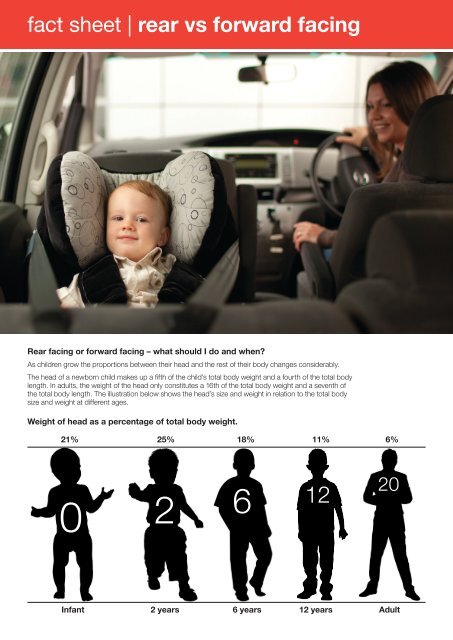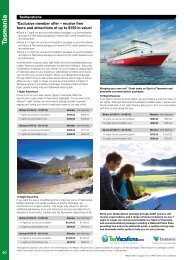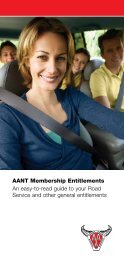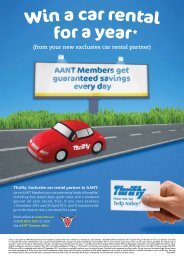fact sheet | rear vs forward facing - AANT
fact sheet | rear vs forward facing - AANT
fact sheet | rear vs forward facing - AANT
Create successful ePaper yourself
Turn your PDF publications into a flip-book with our unique Google optimized e-Paper software.
<strong>fact</strong> <strong>sheet</strong> | <strong>rear</strong> <strong>vs</strong> <strong>forward</strong> <strong>facing</strong><br />
Rear <strong>facing</strong> or <strong>forward</strong> <strong>facing</strong> – what should I do and when?<br />
As children grow the proportions between their head and the rest of their body changes considerably.<br />
The head of a newborn child makes up a fifth of the child’s total body weight and a fourth of the total body<br />
length. In adults, the weight of the head only constitutes a 16th of the total body weight and a seventh of<br />
the total body length. The illustration below shows the head’s size and weight in relation to the total body<br />
size and weight at different ages.<br />
Weight of head as a percentage of total body weight.<br />
21% 25% 18% 11% 6%<br />
0 2 6<br />
12<br />
20<br />
Infant 2 years 6 years 12 years Adult
<strong>fact</strong> <strong>sheet</strong> | <strong>rear</strong> <strong>vs</strong> <strong>forward</strong> <strong>facing</strong><br />
What are the risks?<br />
As the head of a child is proportionally larger and heavier, the<br />
child’s centre of gravity will be located higher up on the body, in<br />
comparison to the centre of gravity of an adult. This means that<br />
a child involved in a crash is very vulnerable to head injuries.<br />
In a crash, a child in a <strong>rear</strong>ward <strong>facing</strong> restraint experiences<br />
forces spread over their back, head and neck. A child in a<br />
<strong>forward</strong> <strong>facing</strong> seat with their body restrained by the harness,<br />
thrusts <strong>forward</strong> violently with nothing to restrain their head.<br />
This puts an enormous strain on their spinal cord, so much so<br />
that it can stretch the spinal cord. If it stretches too far it can<br />
tear, resulting in paralysis or death.<br />
Young children have poorly developed ligaments and muscles<br />
and the vertebrae are not strong enough to protect the spinal<br />
cord.<br />
Research conducted by Kathleen Weber at the University of<br />
Michigan showed that around 12 months of age the injuries<br />
seem to lessen from severe consequences to moderate<br />
consequences. Her recommendation is to keep children<br />
<strong>rear</strong>ward <strong>facing</strong> until at least one year of age.<br />
The Australian Standard for child restraints requires all child<br />
safety seats to be fitted with a top tether strap.<br />
These top tethers on <strong>forward</strong> <strong>facing</strong> child restraints assist in<br />
reducing the amount of head excursion in a crash and<br />
minimise the risk of neck injury to <strong>forward</strong> <strong>facing</strong> children.<br />
<strong>AANT</strong> recommends keeping children <strong>rear</strong> <strong>facing</strong> until they reach<br />
the maximum <strong>rear</strong> <strong>facing</strong> rating for their restraint. All of the<br />
convertible restraints recommended by <strong>AANT</strong> accommodate<br />
children <strong>rear</strong> <strong>facing</strong> up to approximately 12 months of age.<br />
For more information on child restraints contact the <strong>AANT</strong> on (08) 8925 5901<br />
or e-mail info@aant.com.au.






